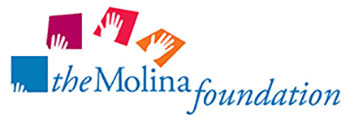Below you will find stories, songs, activities, and lesson plans about the alphabet. These complement your On My Way to Kindergarten activity book and help practice skills to master before kindergarten. They work great for one child, a small group, or an entire classroom!
Try the Molina 1-1-1: choose 1 story, 1 song, and 1 activity. This will give little ones lots of opportunities to practice skills while learning about the alphabet. You can stick with the alphabet for a few days, or try some of our other activity areas like Body & Senses, Colors & Shapes or Numbers & Counting.
Do you have more ideas of activities, stories or songs we might include? Click here to share. If your recommendation is chosen to add to our website, we’ll give you credit and send you a gift!

Stories
Sit together and watch these videos and stories all about the alphabet! You can also pause the videos and point out different letters.
Mrs. Kylene reads “The Mixed Up Alphabet” (7:18 minutes)
Veo Veo – Las Canciones de la Familia Blu
Chicka Chicka Boom Boom on the Moon Cartoon (7:56 minutes)
La Risa de las Vocales, Canciones Infantiles
Alphabet Garbage Truck / Phonics (2:28 minutes)
El Abecedario de la A a la Z – Vídeo Educativo para Aprender las Letras
Alphabet Detective: An ABC Guess the Letter Video
Abecedario Español Completo con Animales
Eating the Alphabet (2:40 minutes)
El Abecedario en Español
Tomorrow’s Alphabet (5:12 minutes)
ABC Spanish (8:45 minutes)
Songs
Sing songs to practice learning the alphabet. Sing along or dance with the songs to get excited about letters!
ABC Phonics Song
La Risa de Las Vocales, Canciones Infantiles
Sesame Street Alphabet Song
El Abecedario de la A a la Z – Vídeo Educativo Para Aprender las Letras
Alphabet Occupations
Aprender a Leer
The Spelling Song
El Abecedario en Español
ABC Song
Abecedario Español Completo con Animales
The Alphabet Song with Basho & Friends
Las Vocales para Niños – Aprender las Vocales – a e i o u
Playlist
Stuck in a car for a while? Sitting in the waiting room? Waiting at the bus stop? We have built a playlist on YouTube with songs and stories all about the alphabet.

Games and Activities
Children learn by doing. Here are activities you can do together to help learn about the alphabet. Simple steps like stirring, cutting, pasting, gluing, and tracing are important – even if an adult can do them faster, it is more important that children practice these skills.
Los niños (as) constantemente se están esforzando para tratar de entender e interactuar en su entorno. Para poder desarrollar su capacidad de pensamiento y de uso del lenguaje durante esta importante etapa, les recomendamos practicar estos divertidos juegos y actividades en todo momento:
Make Letter Flashcards
Make letter flashcards that can be used over, and over, for many difference activities and games!
You’ll Need:
- Index cards, paper plates, cardboard, or paper
- Markers
- Cut all of the cards to be the same size.
- On each card write one letter. Use different colors for consonants and vowels.

El Abecedario Utilizando la Comida

Jugar con la comida es una de las cosas que más le gustan a los niños, esto lo demuestran a diario, entonces ¿Por qué no aprovechar esta situación para que aprendan? Por ejemplo, elabore letras del abecedario utilizando diferentes alimentos como frutas y verduras; asimismo, lograremos comer saludable ya que al estar jugando con ellas, de seguro se llevarán más de una mordida.
Chalk Letters
With chalk and letter flashcards, you can practice letters anywhere!
- Grab some chalk and find some concrete – the sidewalk or driveway is perfect.
- Help your child choose letters from their flashcards that they want to write on the concrete. Try starting with the letters in their name.
- Try spelling more words with flashcards: pick out the letters and then copy them onto the pavement. Try illustrating your words! For example, find “D-O-G” in your stack of flashcards. Kids can copy the letters onto the pavement, and draw a picture of a favorite four-legged friend!
Here’s a fun variation: Write many different letters on the sidewalk with space in between each. (They don’t have to be in order.) Shuffle the flashcards. Call out a letter, showing the kids the flashcard. Then they hunt down the letter and stand on it, until the next letter is called.
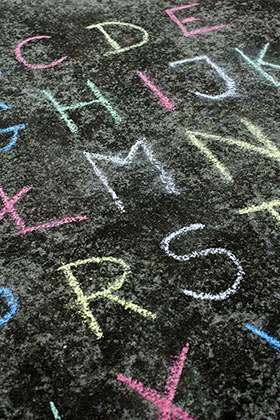
El Abecedario Utilizando Piedras
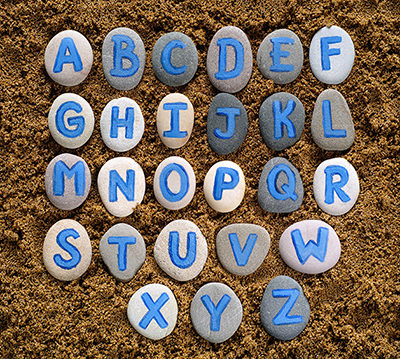
Pintémos las letras del abecedario sobre unas piedras, el nivel del detalle dependerá de la paciencia y de lo dispuestos que estén de ensuciar el lugar de trabajo; una vez terminadas, lucirán maravillosas. Estas piedras decoradas también se podrían memorizar y colgar en la pared para seguir disfrutándolas y practicándolas.
Letters Everywhere
This challenge is to find letters in every day life.
There are many different variations of this game. Try looking for letters in your name, or finding the letters A-Z in the pantry. Make it more fun by saying the sound the letter makes while you hunt for the letter. “Luh, Luh, Luh, L!” or “Tuh-Tuh-Tuh-T!”
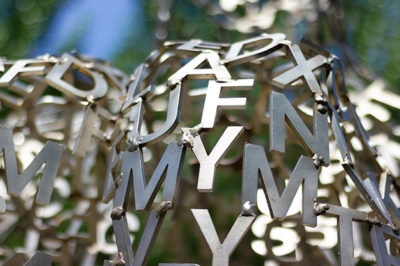
El Abecedario Utilizando Arena
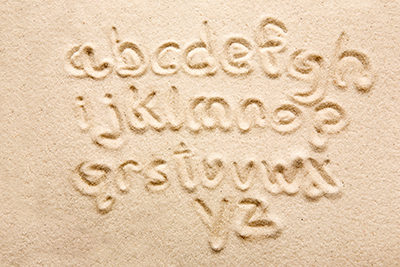
Esta es una actividad muy táctil y divertida, sólo necesitamos una bandeja y arena, de preferencia de colores. Con ello tendremos una actividad que no sólo desarrollará el aprendizaje de los niños, sino que también será relajante para ellos.
ABC Water Balloon Hunt
You’ll need:
- Water Balloons
- Permanent Marker
- Towel/paper towels
- Water
- Bucket
- Notecard/piece of paper
- Crayon
To Prepare:
-
- Fill the balloons with water – just enough to inflate them slightly. Dry them off.
- Using the permanent marker, write a letter on the outside of each balloon. You can write the full alphabet, or just start with your child’s first or last name.
- On a piece of paper or notecard, write the same letters you wrote on the balloons.
- Hide the balloons outside.
To Play:
- Give your child a bucket and the notecard. Invite them to collect the hidden water balloons in their bucket. When they find one, check it off on the list.
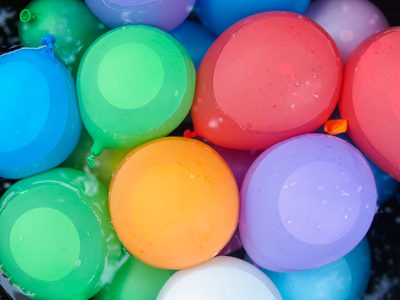
El Abecedario Utilizando Palabras

El objetivo de esta actividad es de darle un mayor uso al aprendizaje de las letras cuando los niños no saben leer todavía. Usted puede ayudarles a aprender algunas palabras más fácilmente al utlizar cada letra del abecedario.
Empiece con nombres de personas conocidas u objetos cotidianos. Es importante que los niños relacionen las letras con las palabras y mientras más palabras les enseñe será mucho major para ellos.
Marshmallow Letters
You’ll need:
-
-
- Small marshmallows
- Toothpicks
- Letters to look at – flashcards, the letter sheet from your workbook, etc.
-
To Play:
-
-
- Choose a letter.
- Pick up one toothpick and put a marshmallow on either end, covering the pointed tip.
- Think about the marshmallows as joints. Continue connecting toothpicks to marshmallows to make the letter shape.
- Make sure that all of your pointy ends are covered with marshmallows.
- Try writing your first name with marshmallow letters!
-
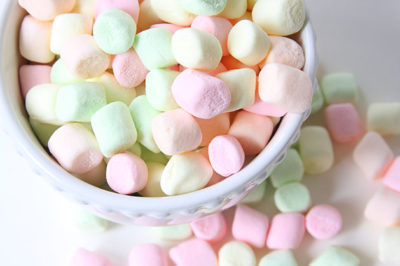
El Abecedario Utilizando un Juego de Memoria

Para empezar, elabore las tarjetas de memoria utilizando lápices, crayones y cartulinas; en cada tarjeta dibuje o pinte una letra del abecedario, y en otras tarjetas dibuje o pinte un objeto, animal, etc. que empieze con cada letra. Agrege el nombre de cada objeto, animal, etc. debajo de la figura dibujada o pintada para que los niños vayan familiarizándose con la palabra.
Coloque todas las tarjetas sobre una mesa y dígale a su niño (a) que vaya escogiendo una tarjeta a la vez, empezando con la tarjeta que tiene la letra para que después escoja la tarjeta con la figura que le corresponda. Use las 27 letras del abecedario, pero si quiere hacerlo mucho más sencillo, empiece con las letras de las vocales.
Esta actividad ayudará a que los niños aprendan las letras del abecedario mediante la asociación de figuras que ellos ya conocen.
Playdough Letters
You’ll need:
-
-
- Playdough (recipe to make your own playdough below)
- Letters to look at – flashcards, the letter sheet from your workbook, etc.
-
To Play:
-
-
- Roll your playdough into long snakes or tubes. While looking at a letter, see if you can twist and bend the playdough to make the same shape. You might need many different tubes.
- Can you make all the letters in your name? What about all of the letters in the alphabet?
-

Make Your Own Playdough
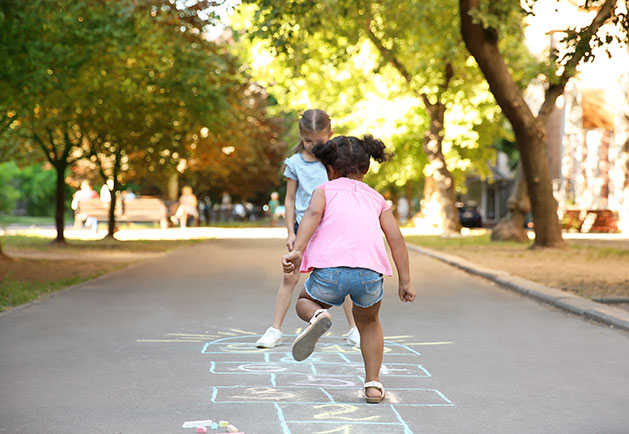
You’ll need:
- Large bowl
- Big spoon
- 2 cups plain flour
- 1 cup of salt
- 1 tbsp of oil
- 1 cup of cold water
- 2 drops of food coloring
- In a bowl, stir together the flour and salt. (This is a great step for little hands!)
- Add water, food coloring, and oil. Mix, with the big spoon, until ingredients are combined.
- Knead the dough mixture well. If the consistency is too wet, ad a little more flour
SuperLetter Bracelets
You’ll Need:
-
-
- Construction Paper – different colors
- White paper
- Scissors
- Glue
- Tape
- Markers, crayons
-
-
-
- Cut a strip of construction paper, any color, long enough to wrap around your wrist – with an extra inch or two at the end. This is your bracelet.
- Cut a small square from the white paper. One side of the square should be the narrow width of your bracelet. This will be where you write your SuperLetter.
- Glue the small white square in the center of your bracelet.
- Choose a SuperLetter and write it in the square. You can choose a different letter each day – maybe start with the first letter in your first name.
- Think about the SuperLetter’s powers – what words start with your SuperLetter? Draw pictures on your bracelet.
- With help, wrap your bracelet around your wrist, and tape the two ends together.
- Share your SuperLetter and its super powers with your family.
-
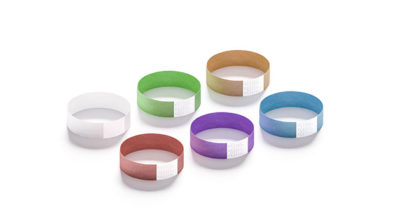
Hidden Letters
Use a “sensory bag” to hunt and seek for hidden letters!
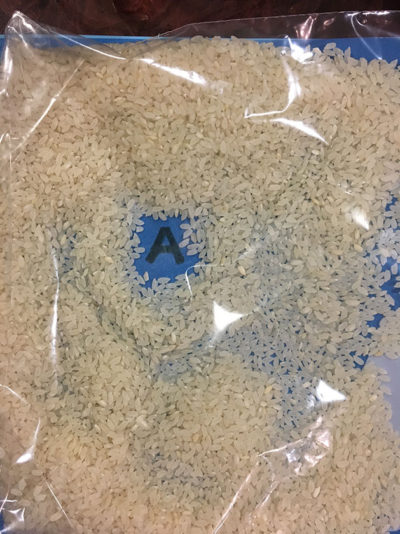
You’ll Need:
- A gallon size re-sealable plastic bag
- Piece of construction paper or cardboard (could be a cereal box) cut to fit into the bag
- Marker
- Dry rice or dry oatmeal
- On the paper or cardboard, write 10-15 large capital letters scattered all over – up, down, sideways – very random. You can make a few different sheets so the activity is “new” each time.
- Slide the paper/cardboard into the bag.
- Fill the bag with rice or oatmeal.
- Lay the bag flat on the table. Your child can move the rice around with their fingers to uncover the hidden letters.
- You can give your child a list of letters on a separate paper. Children can cross off each letter when they find them in their bags. Or, they can find matching letters in their stack of flashcards.
- Get to the end and see if they found them all by pulling out the paper/cardboard and comparing lists.
- Make a new paper/cardboard insert and start over!
Too easy? Create an insert with two and three letter words. Then have your child copy the letters when they find them hidden in the bag. You can also make sheets with numbers, shapes, colors, etc.
Letter Searches
Here are some make-yourself puzzle to practice finding letters – and spelling words!
You’ll Need:
- Two pieces of paper
- Pen, pencil, marker or crayon
- On the first piece of paper, make a 6 x 6 grid. (There should be a total of 36 boxes in your grid).
- Choose 6 three-letter words. (for example: mom, dad, dog, cat, pig, ant, sit, big, mop, nut, rug, run, sun, hen, jog, fan, pot, cut, hop, red, pet, bed, pin, sit, tub)
- Write one word on each line in your grid, starting in different places each time. For example, you might put “mom” starting in the first square on the very top row. And “dad” starting in the third square on the second row.
- Fill the rest of the grid in with random letters.
- On a separate piece of paper, write the six words in a different order than in the puzzle.
- Read the list of words out loud.
- Hand the list to your young friend and let them find the words in the puzzle. When they find the letters in the right order, they can color them in on the grid.
- When all are found, build another puzzle!
Too easy? You can write the words in horizontally, vertically, or even diagonally!





